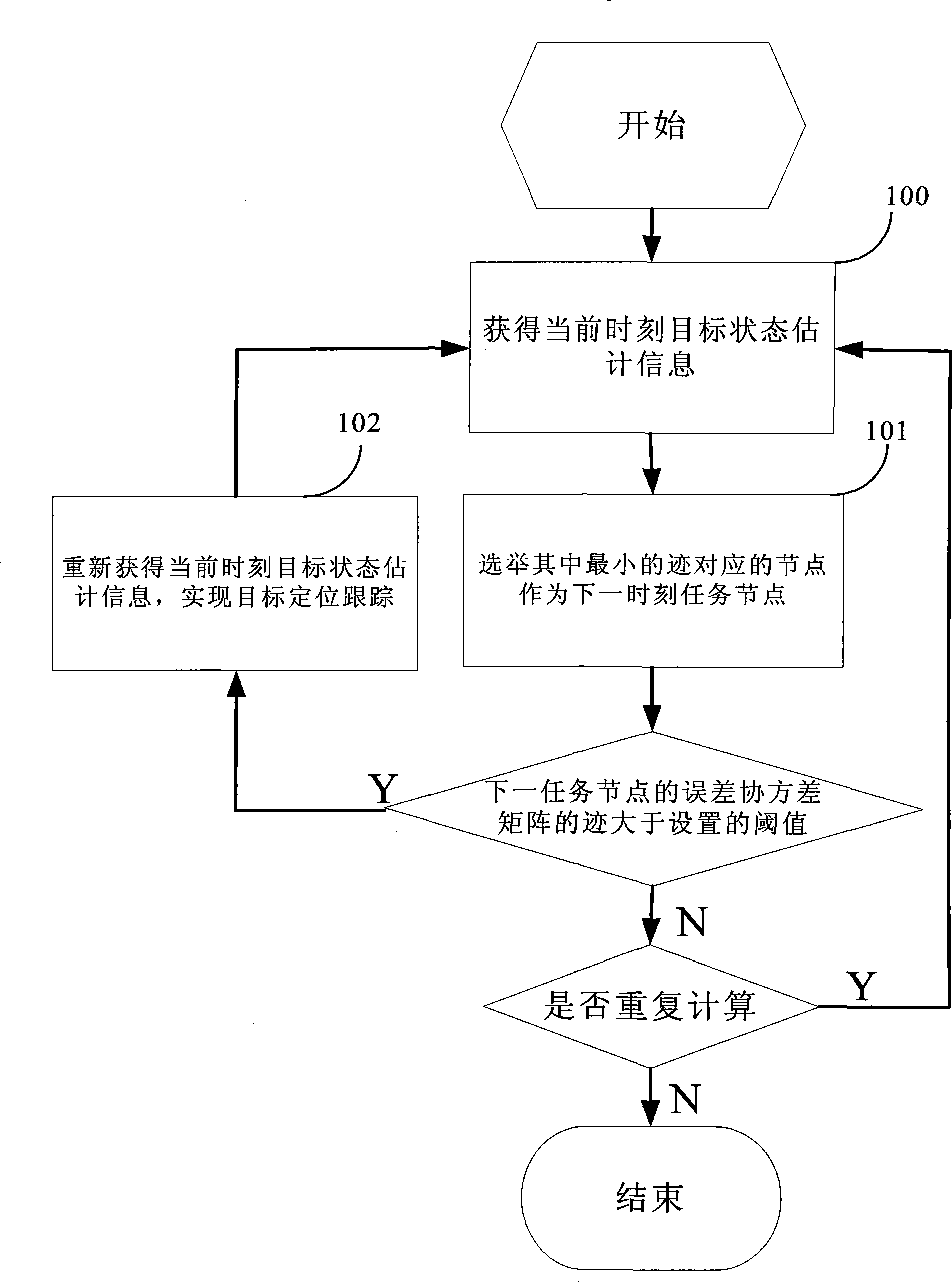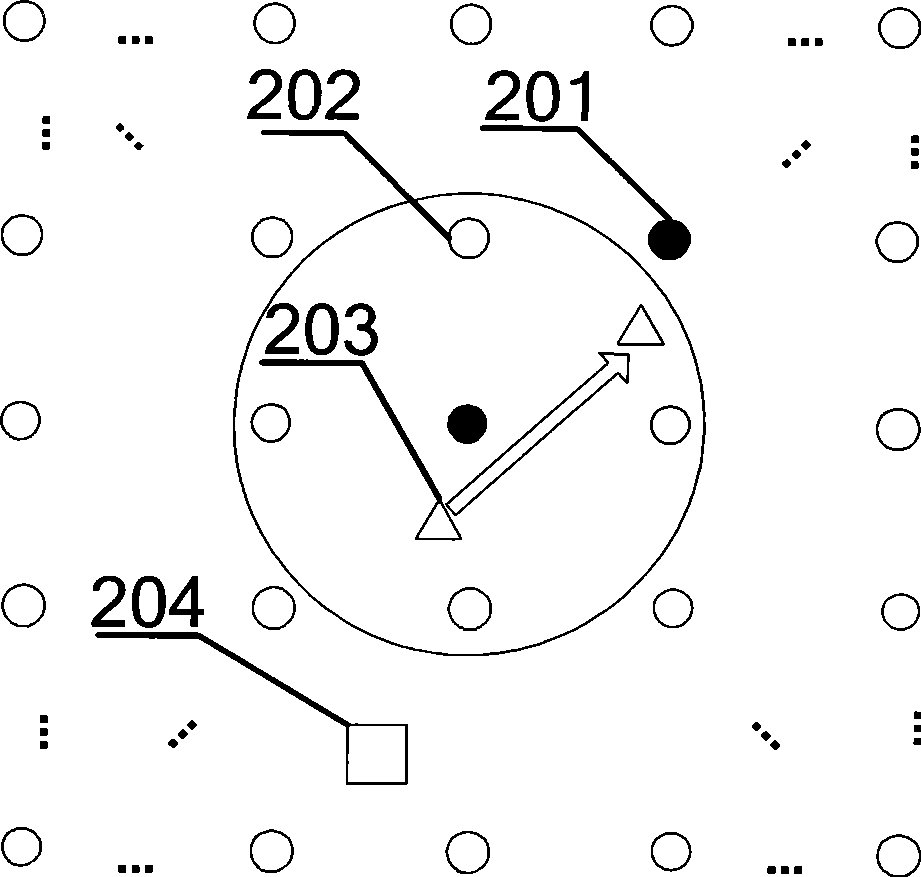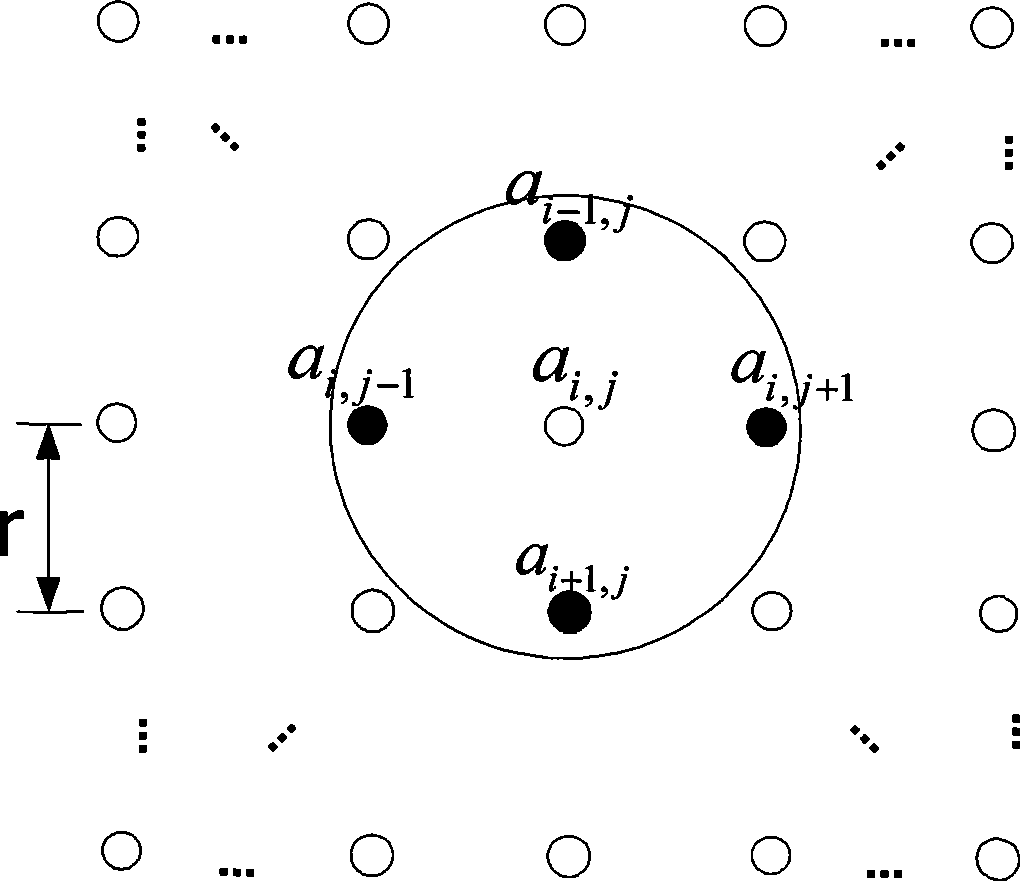Wireless sensor network target tracking method based on distributed processing
A wireless sensor and distributed processing technology, applied in network topology, wireless communication, radio wave measurement system, etc., can solve problems such as large amount of calculation, too much interference, and large amount of observation data, so as to reduce the parameter dimension and reduce the Effect of measurement error and tracking output smoothing
- Summary
- Abstract
- Description
- Claims
- Application Information
AI Technical Summary
Problems solved by technology
Method used
Image
Examples
Embodiment Construction
[0036] In order to make the purpose, technical solution and advantages of the present invention clearer, a target tracking method for a wireless sensor network based on distributed processing of the present invention will be further described in detail below in conjunction with the accompanying drawings and embodiments. It should be understood that the specific embodiments described here are only for explaining the present invention, and are not intended to limit the present invention.
[0037] A wireless sensor network target tracking algorithm based on distributed processing of the present invention is to overcome the traditional tracking method's complex algorithm, large amount of information transmission, large amount of calculation, and large energy consumption. It introduces the extended Kalman filter algorithm At the same time, the principle of minimum state error covariance matrix trace is used to select task nodes, which reduces processor energy consumption, reduces da...
PUM
 Login to View More
Login to View More Abstract
Description
Claims
Application Information
 Login to View More
Login to View More - R&D
- Intellectual Property
- Life Sciences
- Materials
- Tech Scout
- Unparalleled Data Quality
- Higher Quality Content
- 60% Fewer Hallucinations
Browse by: Latest US Patents, China's latest patents, Technical Efficacy Thesaurus, Application Domain, Technology Topic, Popular Technical Reports.
© 2025 PatSnap. All rights reserved.Legal|Privacy policy|Modern Slavery Act Transparency Statement|Sitemap|About US| Contact US: help@patsnap.com



